Chimneys restuccoed in
Great Falls, Virginia
Here's how we did it :
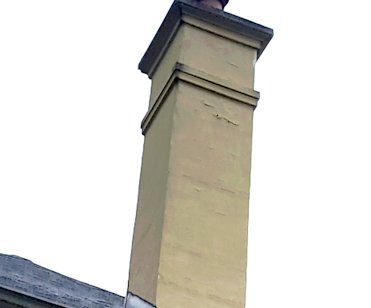
Chimneys were half inch one coat stucco with a synthetic finish. Loose areas and buckling indicate water infiltration from above.
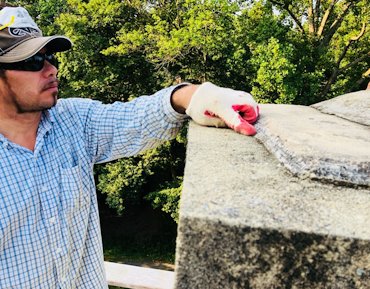
EIFS foam bands caused the damage. Note how the band at the top is level, or even angled into the block.
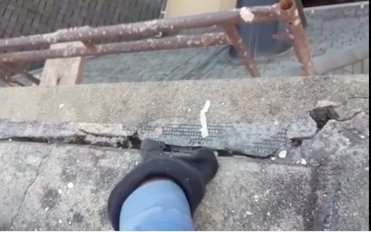
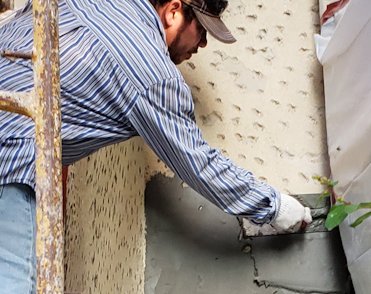
Chimneys are chipped up and a scratch coat is put on using plenty of flex con, a bonding admixture, in the mortar.
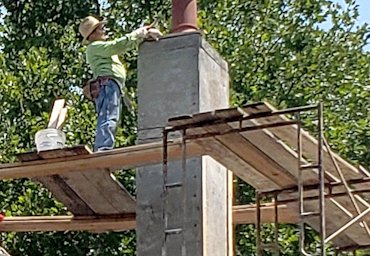
Brown coat is rodded off. Chimney is straight, I promise.

A white synthetic finish is put on hand tooled cement details. Later, the chimneys are painted to match the existing house.

The top band is formed by nailing on 3 layers of one by fours at the bottom, and forming the top using one by's.
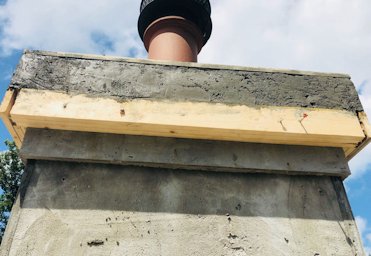
Metal lath is nailed on and the bands are filled in.
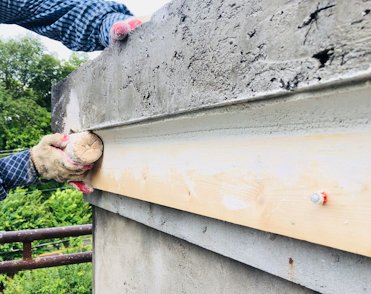
Round member is run using a full water bottle.
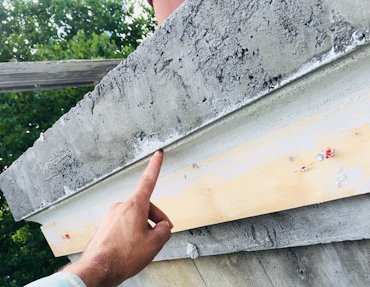
The top detail is tooled in using a homemade rod.
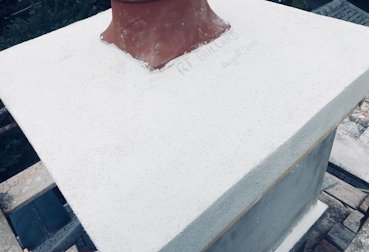
The crown is done using white portland cement and white sand, with plenty of flex con in the mortar. The flex con makes the mortar a lot harder and less porous.
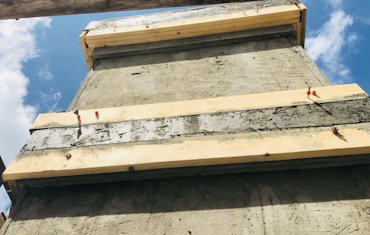
The two step band is done in a similar fashion. Here the second projection is formed and filled.
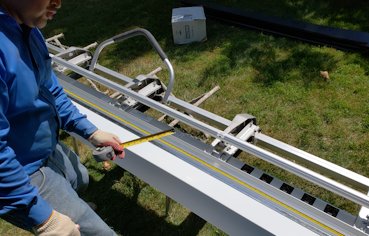
A metal brake is used to bend the flashing.
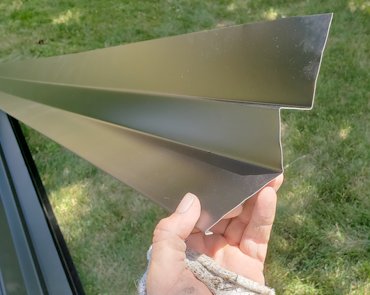
A view of the profile of my stucco stop counter flashing..
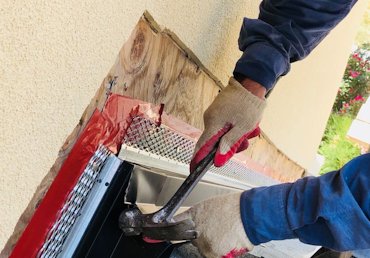
Stucco is cut off back to the plywood sheathing. New counter flashing is put on, sealed with tape, and overlapped with my drainable plaster stop
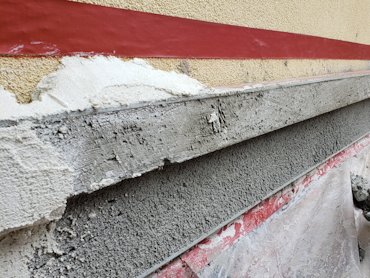
A decorative band is used to hide the patch. The top is angled off and the face coated to bring the band out to the right thickness.
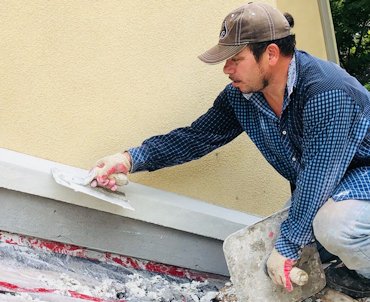
Top band is troweled down.
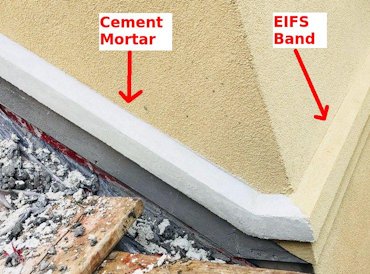
Our cement band matches up with the EIFS band. At least the people who put on the EIFS had enough sense to angle the top.
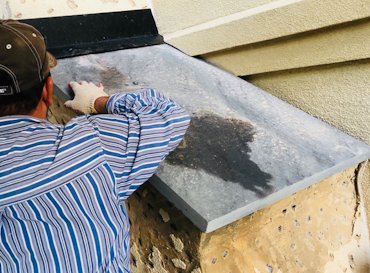
But of course, flagstone chimney shoulders.

'Nuff for now.




















